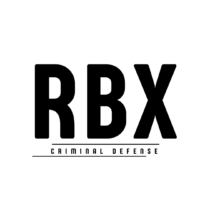What is Driving Under the Influence?
Driving under the influence is operating a motor vehicle with:
- Blood alcohol content that is over the legal limit, or
- “Under the influence” of alcohol, drugs, or both.
Blood Alcohol Content (BAC) %
It is illegal to operate a motor vehicle with a blood alcohol concentration (“BAC”) of:
- 0.08% or higher― 21 years old or older operating a regular passenger vehicle;
- 0.04% or higher―operating a commercial vehicle;
- 0.01% or higher―younger than 21 years old.
“Under the Influence”
Under the influence means that one’s mental or physical abilities are so impaired that he or she is no longer able to drive a vehicle with the caution of a sober person, using ordinary care, under similar circumstances.
Driving Under the Influence Penalties
The punishments for a DUI include a suspended driver’s license, at least $1,500 in fines, 3 to 5 years of probation, a mark on your DMV and criminal records, at least 3 months of classes, and fees for classes.
Additional Penalties
Penalties may also include jail time, continuous alcohol monitoring (SCRAM), installation of an ignition interlock device in your vehicle, impoundment of your vehicle, and community service. You will likely be required to abstain from alcohol and to obtain an SR-22 insurance policy.
The severity of the punishment depends on the facts of your case, including Blood Alcohol Content % (BAC), prior DUI convictions, whether an accident, injury, or fatality occurred, and whether you left the scene of the accident.
Loss of Driver’s License
In California, law enforcement officers may take your license if they suspect you are driving under the influence. The DMV will suspend your license if you fail to contact the DMV within 10 days to schedule a DMV hearing.
Driving Under the Influence Defenses
If law enforcement fails to follow proper procedures, the defendant was not driving the vehicle, or was not intoxicated at the time of driving, it is a defense to DUI charges.
Error in Police Procedures
Law enforcement must have probable cause to believe a person is driving under the influence before conducting an arrest. In addition, they must follow specific procedures for seizing a driver’s license, administering breathalyzer and blood tests, and maintaining and calibrating devices.
Under the Legal Limit
When law enforcement property conducts a breathlyzer or blood test within three hours of driving, it is presumed that the test accurately measured the driver’s blood alcohol content. In that case, the defendant must prove that their blood alcohol content was actually under the legal limit.
Under the Influence
There is no bright line for what it means to be “under the influence.” Instead, the test is based on all facts, including whether the driver admitted to being under the influence, the pattern of driving, and the results of field sobriety tests.
Less Common Defenses
If you were not the driver, had no choice but to drive while intoxicated to protect your safety, or were drugged without your consent, it is a defense to driving under the influence. However, these defenses are difficult to prove and therefore are rarely used.
Reduced Charges
In some cases, the district attorney will offer to resolve a DUI case in exchange for a guilty or no contest plea to wet or dry and reckless charges. This can happen when there is a significant technical flaw in the prosecution’s case or the blood alcohol level is at or below the legal limit.
What is the difference between “Wet” and “Dry”?
- A wet and reckless is considered a prior DUI for court and DMV purposes. If you receive a subsequent DUI conviction it will be treated as your second DUI.
- A wet and reckless involves the use of drugs, alcohol, or both. The prosecutor must file a statement with the court describing how drugs or alcohol were involved in the offense.
Dry and Reckless
“Dry and reckless” is defined as driving on public roads with disregard for the safety of persons or property.
Wet and Reckless
(Vehicle Code Section 23103.5)
“Wet and reckless” is defined as driving on public roads with disregard for the safety of persons or property where drugs or alcohol is involved in the offense.
Driving Under the Influence of Drugs
Prescription Drugs
There is no red line for prescription drug impairment, unlike like the .08% BAC cut-off for alcohol. Therefore, you could be convicted of DUI with any amount of prescription drugs in your blood. Having a valid prescription and using the prescribed dosage are not a defense to a drug-related DUI.
Marijuana
Recreational marijuana is now legal in California. However, it is still illegal to drive under the influence of marijuana. Drivers who possess marijuana and fail sobriety tests are often arrested for DUI. Once arrested, drivers are tested for marijuana in their blood. A person who regularly uses marijuana, or used it within a few days of driving, will likely test positive and be charged with driving under the influence.
RBX Law defends against driving under the influence charges.

